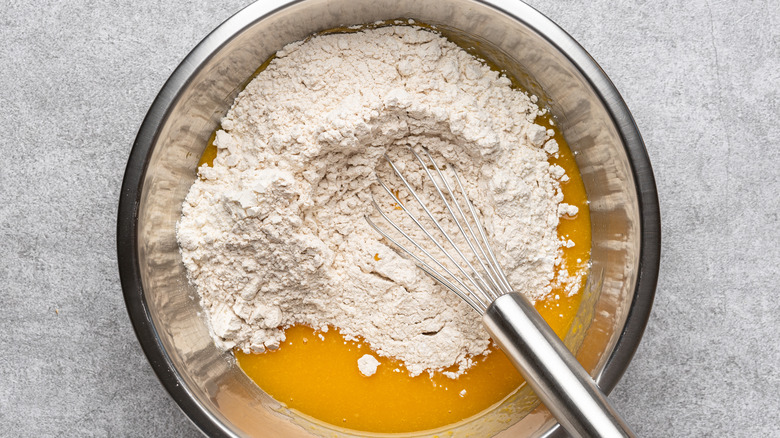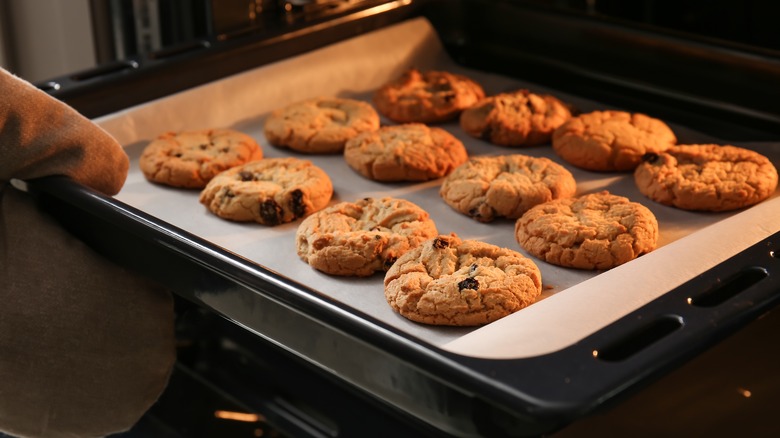The Real Reason We Separate Dry And Wet Ingredients
One of the tenets of baking that we often "take for granted" is mixing and combining the dry (flour, baking powder and soda, salt, etc.) and wet ingredients (eggs, sugar, vanilla, etc.) separately. The question should be raised though, as to why. What does this disparate cooking mechanism do for the final product? If the dry/wet approach were abandoned, how would our baked goods be affected? Where did the method originate?
On a Milk Street discussion board question entitled "Mixing Cookie Dough," a staff member responded to an inquiry about the dry/wet separation by stating that "one big reason to keep dry and wet separate is so that we don't over-hydrate or over-work the flour, resulting in dense, bready cookies." The same person also noted that "mixing salt, spices, and leavening agents with the flour helps to ensure that they are evenly spread throughout the batter," before adding that "we don't want to expose leavening agents to moisture too early."
While it is acknowledged that working quickly and abandoning the dry/wet approach might work, it is really not all that more laborious to dirty two bowls, ensuring a successful baked good, especially when the alternative ends up with subpar cookies due to not wanting to use extra dishes.
Why is this method important?
The Takeout elaborates on this point, noting that flour sticks together in clumps when it gets wet. This means that the batter (or bough) will not be mixed properly, possibly resulting in chewy pockets of raw flour coated in wet batter or the opposite — wet chunks that are coated in dry flour. In addition, dumping powdered items into a bowl can create a mess with that puff of flour ending up all over your counter, whereas adding alternating wet and dry mixtures (typically over low speed) leads to proper mixing *and* less cleaning of your kitchen. Win-win!
The Takeout's Allison Robicelli also mentions another helpful tip, akin to the way many make homemade pasta: "Mix the dry ingredients together, make a well in the center, pour in the liquids, mix the liquids together well, then gradually pull in dry ingredients while mixing." Cook's Illustrated actually notes that some items — like pancakes — may not be too negatively affected, but most other baked goods are susceptible to not turning out well if the dry/wet order and preparation is not followed.
It is certainly important to abide by the wet/dry separation approach. If one extra bowl gets dirty, it is no big deal ... especially if that means a moist and delicious baked good is the result.

